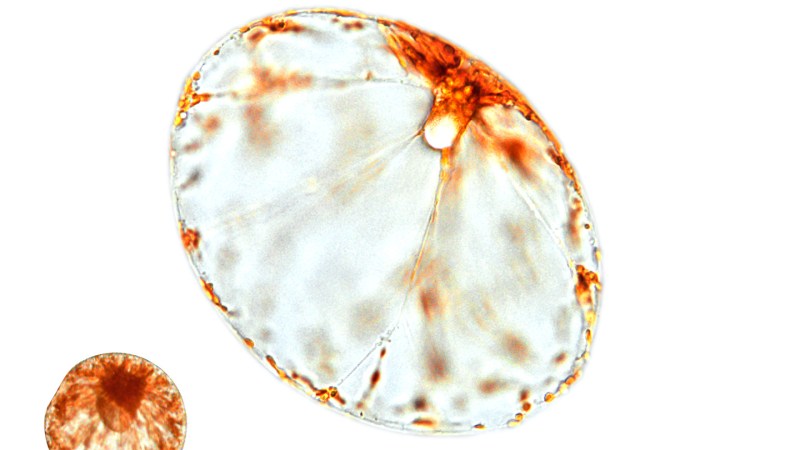
It’s one of the most massive migrations on Earth: a huge biomass of tiny plankton that travel from deep in the sea toward the surface. Yet not all of those organisms have limbs to propel themselves upward. So how some of them manage to undergo such a long journey has been a mystery.
Now, a team of researchers has shown that one species of phytoplankton has an ingenious solution: swelling to six times its original size. The process reduces its density and allows it to float upward like a helium balloon, bioengineer Manu Prakash and his colleagues at Stanford University report October 17 in Current Biology.
“This is unique,” says Andre Visser, an oceanographer at the Technical University of Denmark in Kongens Lyngby. “They’ve actually made a case for a novel way where these cells can actually stay buoyant or stay near the surface.”
The team collected water samples about 160 kilometers off the coast of Hawaii, searching for and observing the behavior of Pyrocystis noctiluca. These 1-millimeter-long unicellular phytoplankton, better known for their bioluminescence, make a once-in-a-lifetime trip from about 125 meters deep to about 50 meters, where there’s more of the sunlight that they need to photosynthesize. Such journeys for phytoplankton can take days, unlike for the tiny animals, or zooplankton, that usually make the trek on a daily basis.
In the lab, the team used special microscopes that put the phytoplankton on a kind of “hydrodynamic treadmill” to re-create the movement of the cell traveling up the water column. “This is a little bit like a virtual reality machine for single cells,” Prakash says.
P. noctiluca is denser than seawater and should sink. But at the beginning of its life cycle, it swells, reducing its density and traveling up the water column, the team found. At the end of its seven-day life cycle, the cell then starts to divide into two daughter cells as it sinks. When the division is completed, the two newborn cells inflate by filling up with seawater — ballooning to six times their original size in around 10 minutes. And so the cycle begins again.
The researchers hypothesize that the cell becomes less dense and more buoyant as aquaporin proteins in the cell filter out dense salt from the incoming seawater. “In this way, you can have much less dense material flooding into the cell, making it able to be less dense than the surrounding seawater,” says Stanford bioengineer Adam Larson.
Calcium in the seawater might play a role in triggering and making that transformation possible, experiments using seawater with and without calcium suggest.
Inflation doesn’t just help the phytoplankton rise. “Getting big actually has huge consequences for other parts of their life,” Visser notes. “Bigger cells tend to have lower predation risk. There’s fewer things that can eat them.” It also helps with nutrient uptake and photosynthesis: A bigger surface lets the cell capture more sunlight.
#tiny #phytoplankton #trek #long #distances #upward #ocean
Image Source : www.sciencenews.org